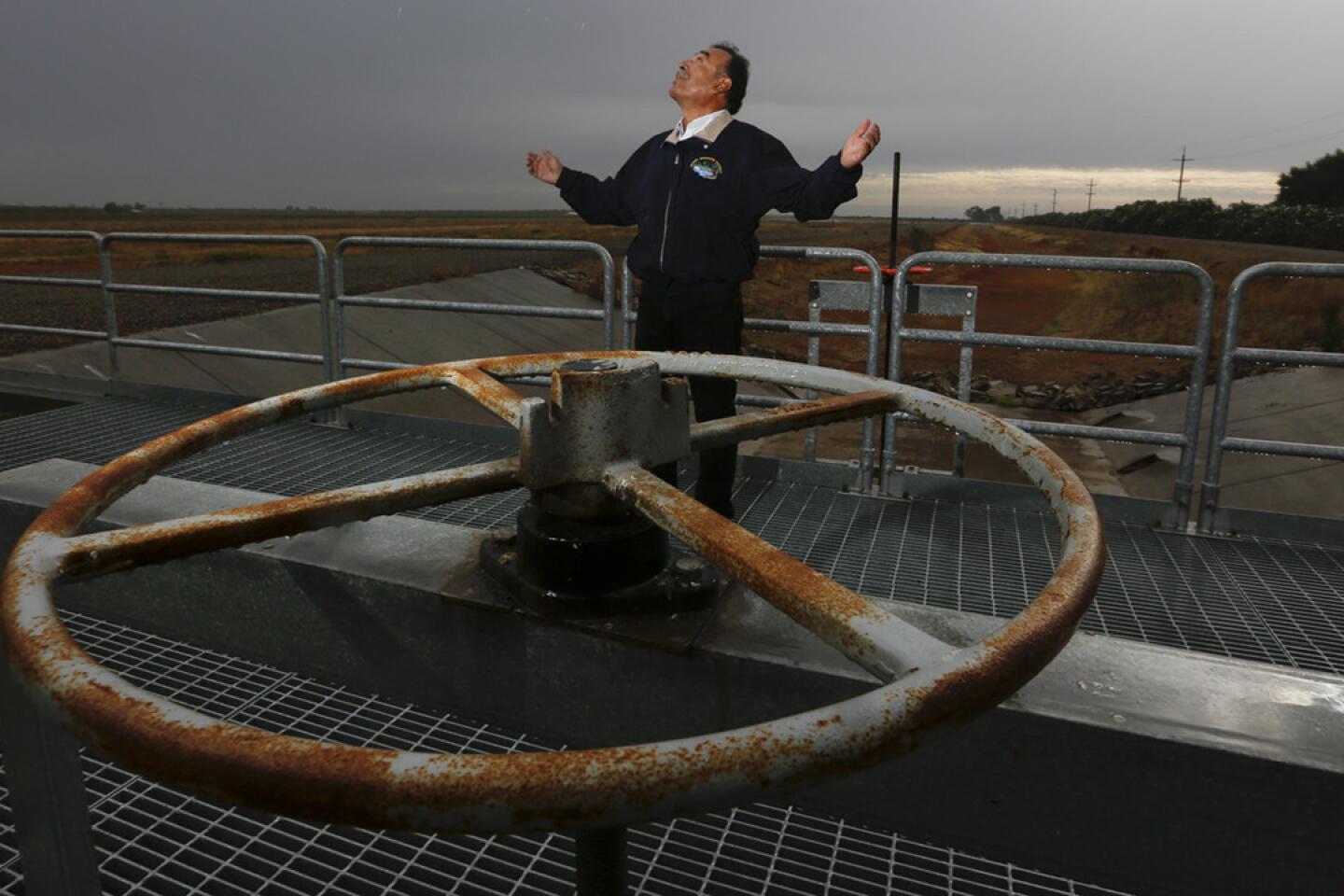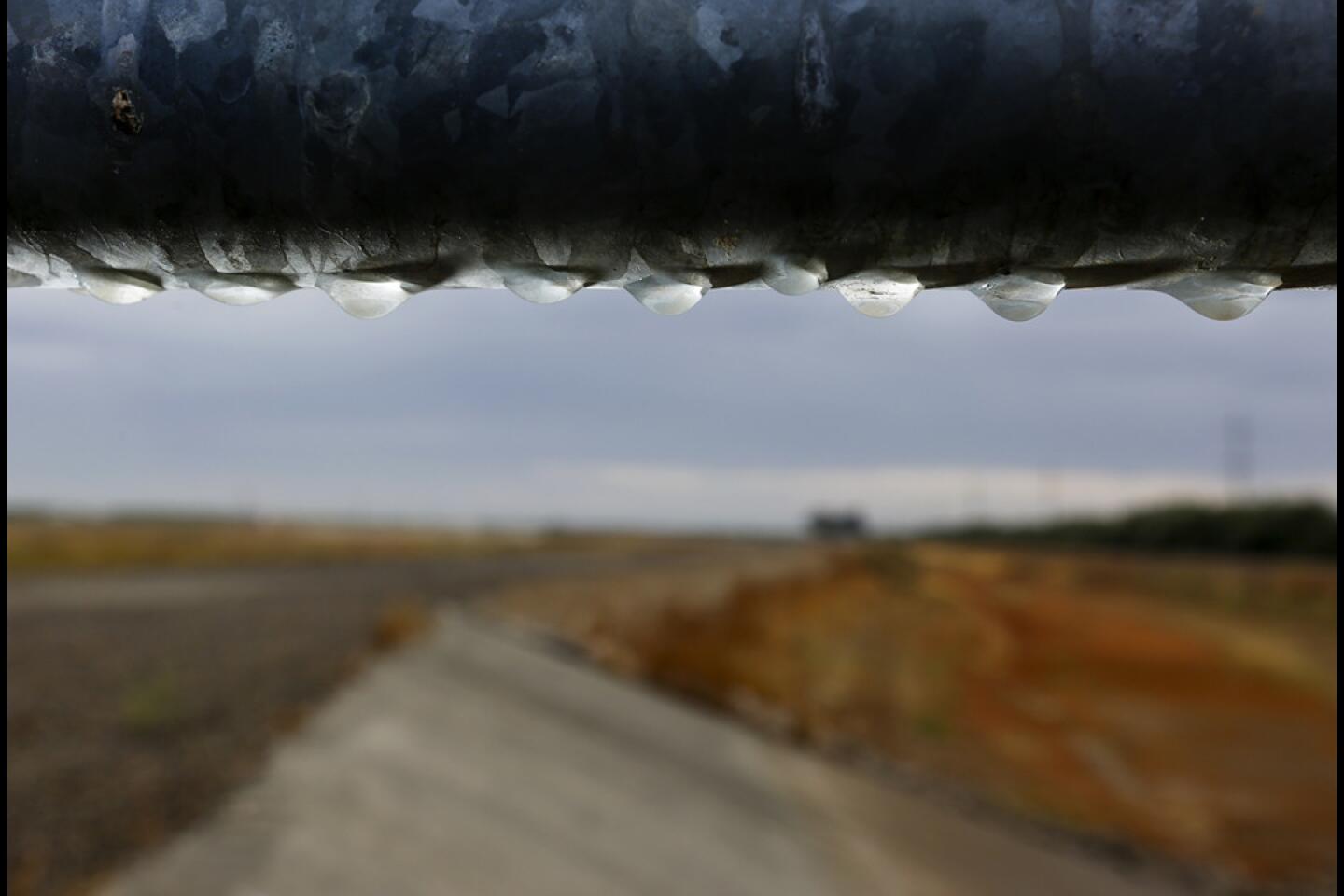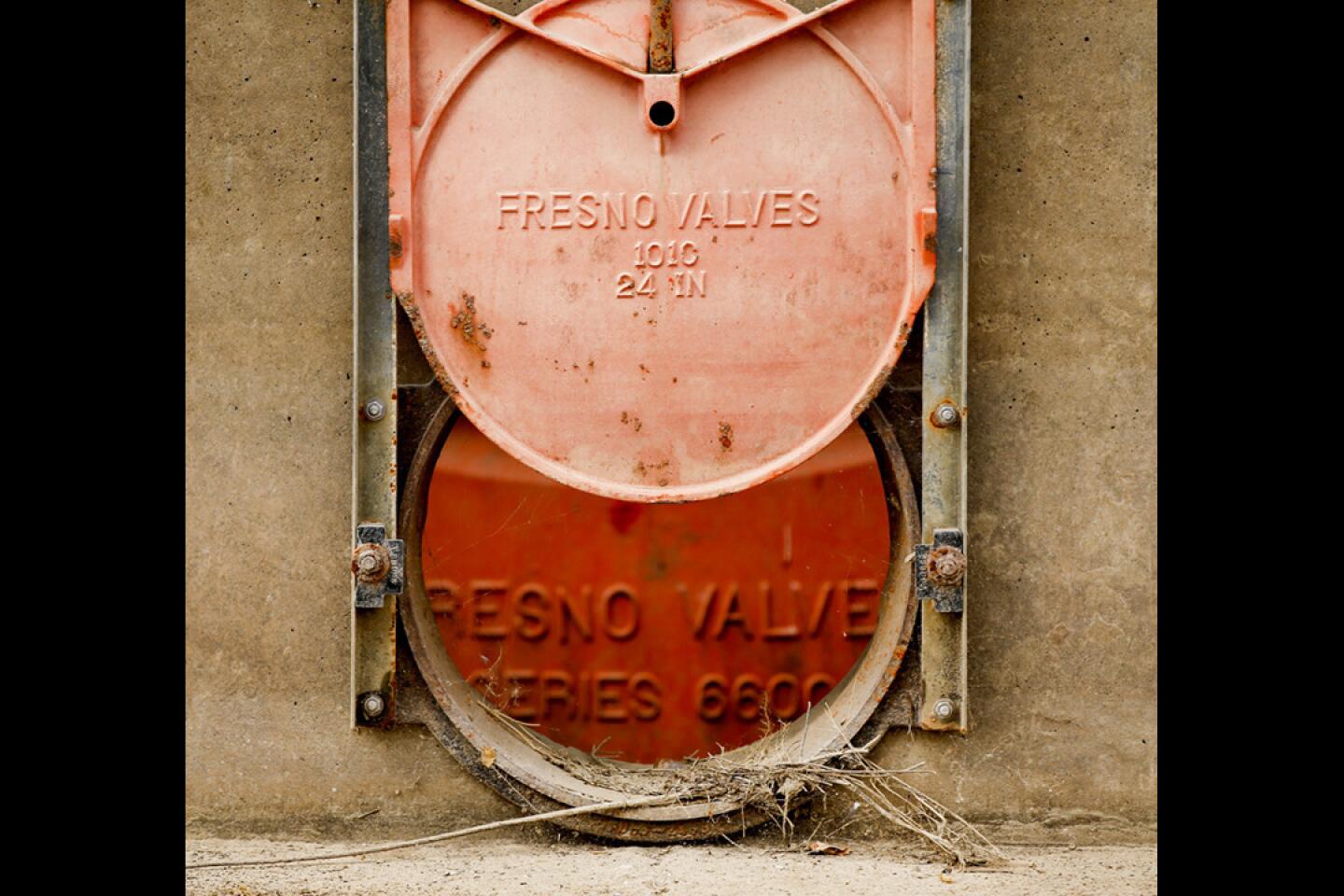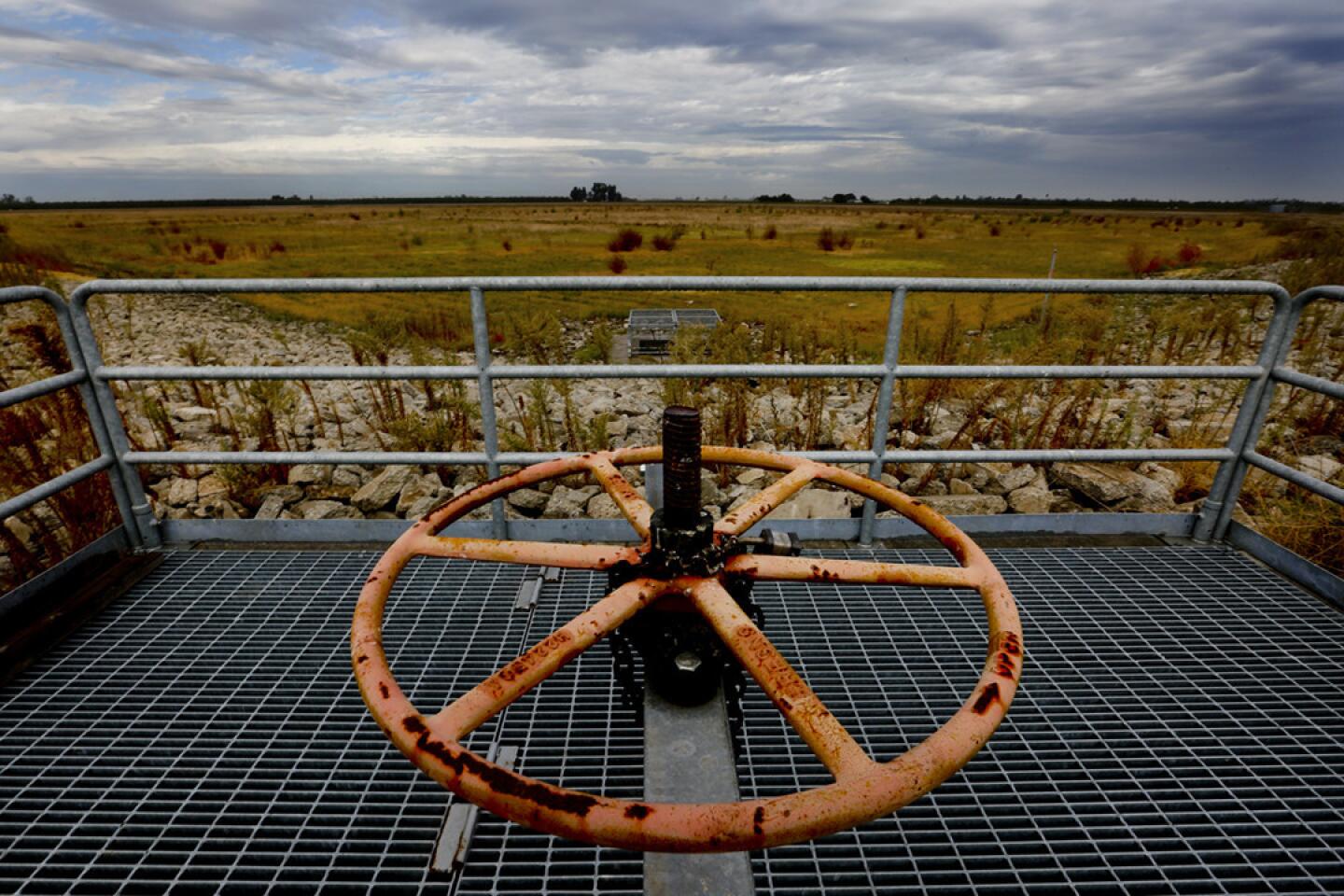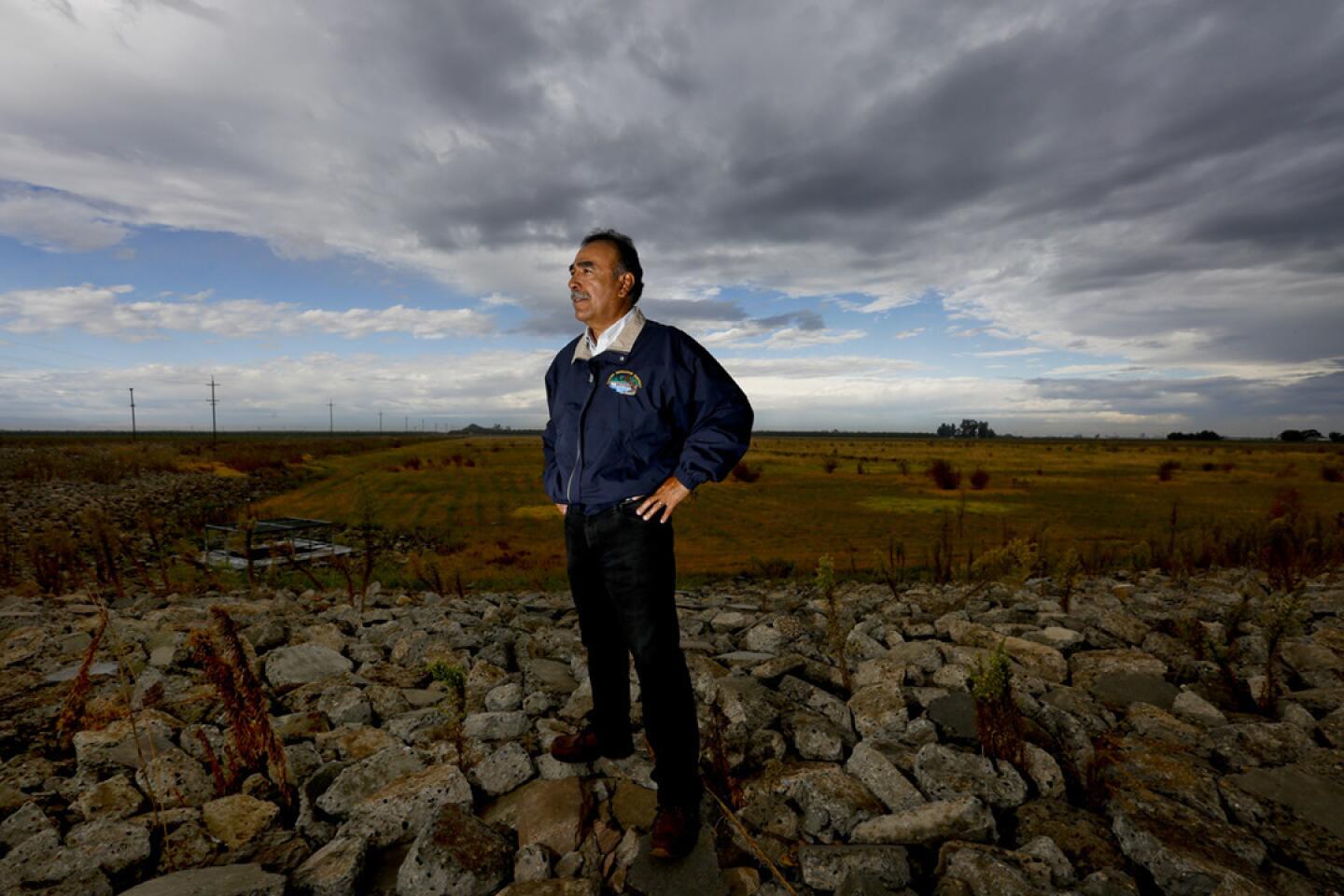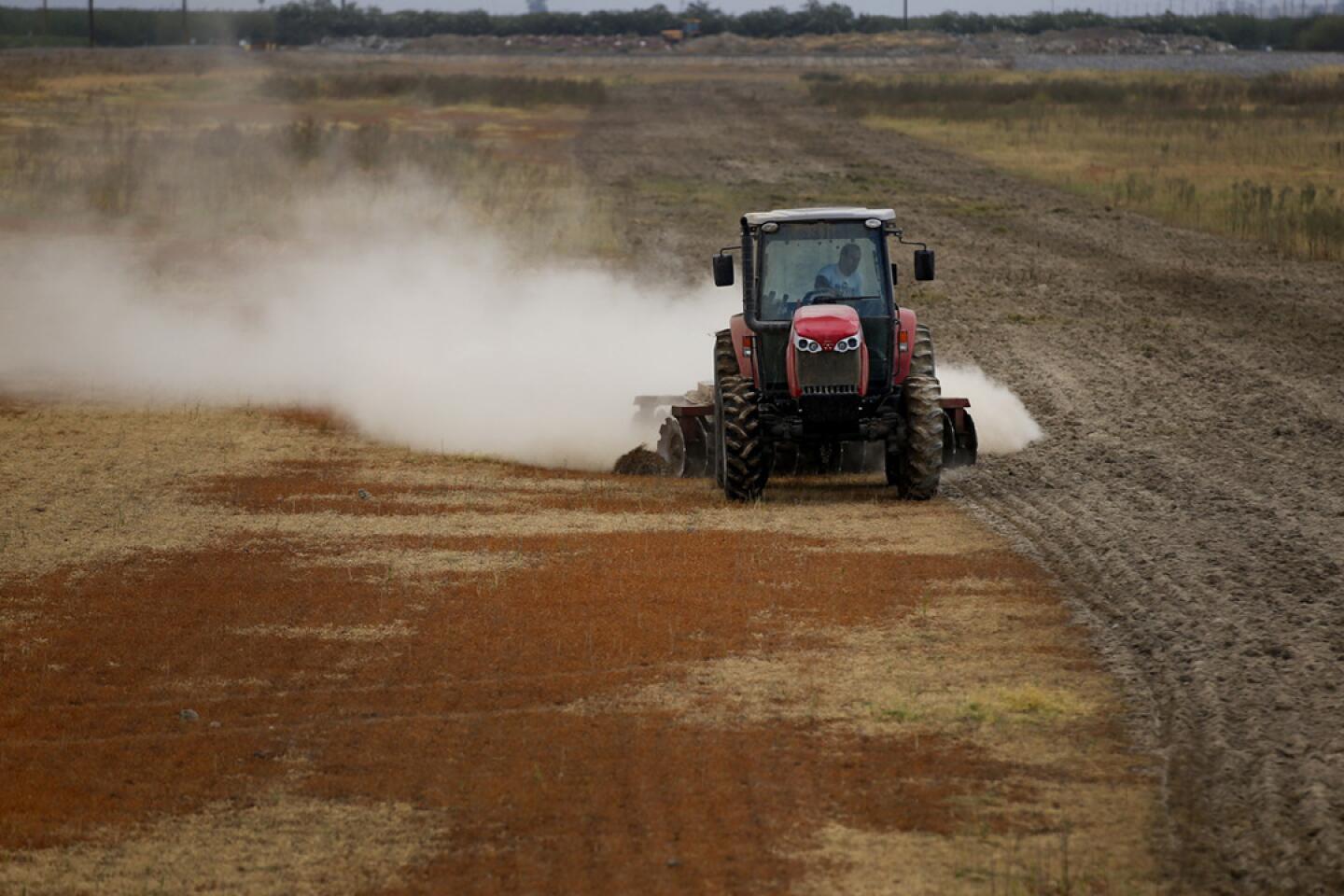To save water, an underground movement to bank El Niño’s rainfall
Reporting from FRESNO — Gary Serrato watched as a tractor worked its way across a field of dried-up weeds, slicing the sandy dirt into orderly furrows.
The field was being readied not for a crop but for what he hopes will be a bountiful harvest of floodwater this El Niño winter. “We’re going to capture as much as we can,” said Serrato, general manager of the Fresno Irrigation District.
He was standing in the district’s Boswell Groundwater Banking Facility near Fresno: A complex of 100 graded acres enclosed by low earthen berms. If El Niño lives up to its promise, early next year up to 10 feet of Kings River flood flows will inundate the shallow basins and slowly seep into the torn earth, replenishing growers’ groundwater supplies.
Water and Power is The Times’ guide to the drought. Sign up to get the free newsletter >>
Boswell is one of four groundwater banking projects the district has built in the last decade to supplement supplies from Pine Flat Reservoir and corral periodic floodwaters that would otherwise disappear downstream.
“It’s worked out great for us,” Serrato said. “We intend to build more.”

With El Nino promising a wet winter, water districts across the state are working feverishly to capture as much rain as possible to recharge depleted aquifers.
Deep drought and predictions that climate change will substantially shrink the mountain snowpack that serves as nature’s reservoir are amping up calls for more water storage in California.
Long-standing proposals for costly new dams and reservoirs remain in play. But interest is also surging in projects such as the Boswell bank that are rewriting the standard storage script.
When the California Water Commission this year surveyed water agencies about storage proposals that might qualify for funding under Proposition 1, the 2014 water bond approved by state voters, half the responses involved groundwater projects, including one from Serrato’s district.
A confluence of factors is focusing attention on stowing supplies underground, which is generally cheaper and less environmentally damaging than building a big dam and reservoir.
A major force is the new state groundwater law that requires Californians over the next two decades to end the chronic over-pumping that has depleted many major aquifers.
Another driver is money. The days when the federal government would sweep in with a blank check for a mammoth storage project are over. And although Prop. 1 sets aside $2.7 billion for storage, the bond legislation specifies that the state will pay for no more than half of a project. That means local backers will have to dig into their pockets.
Though groundwater storage costs can vary substantially depending on the water source, the median price is significantly less than that of major new reservoirs, according to Stanford University researchers. Last year they concluded that the $2.7 billion in bond funding could provide six times more storage capacity if it is spent on groundwater projects than if it goes to the construction of new dams and reservoirs.
Many water experts say California needs more storage to buffer the effects of climate change, which is expected to intensify swings between very wet and very dry years. Global warming also means more precipitation will fall as rain, which creates heavy bursts of winter runoff, and less as snow, which melts slowly and fills reservoirs in the spring just as seasonal demand rises.
“We don’t have the pattern of runoff that we once did when most of our big projects were built,” said Lester Snow, a former secretary of the California Natural Resources Agency and who now heads the California Water Foundation.
“To compensate for that, we need to be able to capture some of the peak flows we’ll have ... and get that into long-term storage,” Snow said.
The best way to do that, he argues, is to put it in the ground. “We don’t keep water in reservoirs. It gets used on an annual basis. Groundwater is far superior for putting water away for a long period of time.”
The state Department of Water Resources doesn’t have good figures on how much vacant, refillable space is available in California’s groundwater basins. But a department analysis suggests there is plenty — and more every year as Central Valley growers turn to wells to make up for steep, drought-related cuts in their irrigation deliveries.
From 2005 to 2010, the Central Valley groundwater table dropped an average of 9 feet. According to department estimates, that amounts to 5.4 million acre feet to 13.1 million acre feet of storage space.
In the Southland, a 2011 report for the Metropolitan Water District of Southern California concluded the region has 3.5 million acre feet of unused aquifer space. (An acre foot is enough to supply two average households for a year.)
By comparison, the three biggest surface reservoir proposals under consideration would add a total of 3.8 million acre feet to the state’s storage capacity.
Still, there are limits to groundwater projects. The cheapest method of recharge is through spreading basins, which have to be located on relatively coarse-grained soil through which the water can percolate. There has to be a way of getting supplies to the recharge areas, and there has to be a source, whether flood flows, releases from surface reservoirs or recycled water. Compared with how quickly a reservoir can fill up and release supplies, groundwater recharge and withdrawal is a relatively slow process.
Moreover, said Jeffrey Mount, a senior fellow at the nonpartisan Public Policy Institute of California, “You got to be damn sure somebody else hasn’t dropped a straw” into the hidden reserves, something that is much easier to do with a surface reservoir.
None of that is stopping the long-neglected sibling of more glamorous dam projects from finally getting some attention, especially in the over-pumped San Joaquin Valley. To the south of Serrato’s district, the Semitropic Water Storage District is pursuing an ambitious proposal to revive a portion of historic Tulare Lake.
Fringed with thick tule marsh, teeming with waterfowl and filled with Sierra Nevada runoff from the Kings and three other rivers, the shallow lake swelled in the wettest years to the largest body of fresh water west of the Mississippi.
Then the rivers were diverted in the early 1900s for irrigation and dammed. Tulare Lake disappeared, replaced with J.G. Boswell’s cotton fields, vineyards, citrus groves and oil fields. Growers use a network of bypasses and canals to keep the Kings’ spring overflow out of their fields, shunting it to the San Joaquin River and out of the basin.
Semitropic wants to catch some of those wet-year flood flows and redirect them to 40,000 acres of the old lake bed, where the agency proposes to construct three shallow, earth-bottomed reservoirs. The water would be temporarily stored there and then conveyed to spreading basins at the district’s groundwater banking facilities.
“This is water that is leaving that area, land that was farmed. Now it’s going to be used for flood regulation, recognizing it’s all part of the historic lake,” said Jason Gianquinto, Semitropic’s general manager. “It generates a local supply. I think there are a lot of benefits here.”
The agency would buy permanent easements for the land — none of which, he said, belongs to the J.G. Boswell Co.
The scale of the venture will depend on whether Semitropic gets public funding. At 40,000 acres, the project would cost an estimated $350 million and store 250,000 to 500,000 acre feet of water, Gianquinto added. A downsized project financed by the district would have a capacity of no more than 100,000 acre feet.
It will be up to the nine-member water commission, appointed by the governor, to sort out which projects get funded under Prop. 1 guidelines.
“I know there’s a large interest in groundwater storage projects, and the commission is very interested in exploring those,” said Joseph Byrne, chairman of the commission, which expects to start writing checks in 2017.
Twitter: @boxall
ALSO:
Cold front could bring wind and light rain to L.A. area
Controversy over oil study on Brown ranch is mainly bull
‘Tale of two Californias’: Coastal voters upbeat on economy, inland residents anxious
More to Read
Sign up for Essential California
The most important California stories and recommendations in your inbox every morning.
You may occasionally receive promotional content from the Los Angeles Times.
